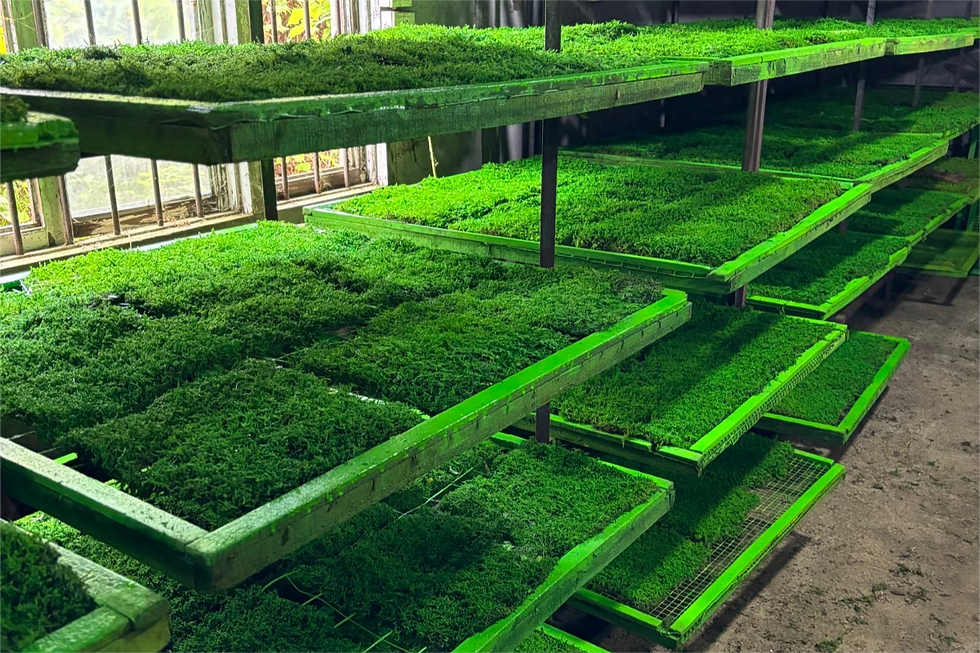What Are the Mixed and Future-Oriented Techniques of Plant Preservation?
- Annie Zhang

- May 1
- 4 min read
Updated: Jun 10

There’s something almost magical about preserved flowers—the way they can capture a moment of beauty and hold it for months or even years. But behind that effortless look is a complex and evolving craft. As more people around the world seek sustainable, long-lasting floral products, traditional preservation methods alone are no longer enough. Environmental responsibility, broader species preservation, and better color retention have become must-haves—not just nice-to-haves.
Mixed plant preservation techniques combine several processes to enhance durability, color, and texture.New research focuses on making flower preservation more sustainable and suitable for a wider range of species.Countries like Japan and the Netherlands are pioneering breakthroughs that will redefine the future of preserved flowers.
Index:
Mixed Techniques of Plant Preservation
Modern preservation is no longer a one-size-fits-all approach. It has evolved into an intricate blend of techniques designed to meet different botanical needs while achieving stunning results.
Typically, preservation involves a combination of dehydration, glycerin-based rehydration, and pigmentation control. For instance, many popular preserved flowers like roses and eucalyptus first undergo alcohol dehydration or silica gel drying. They are then rehydrated with a glycerin solution, sometimes enriched with dyes to restore or enhance their natural color.
To give a real-world example, Thai purple orchids are particularly sensitive. Their preservation avoids alcohol entirely: dehydration is done with silica gel, followed by rehydration with pure glycerin, maintaining the orchid’s original vibrant hue.
Additionally, bleaching is often a necessary step to prepare flowers for recoloring. However, unsafe methods involving chlorine or harsh chemicals are strictly avoided by responsible manufacturers like Sweetie-Group.
Here’s a quick comparison of key mixed preservation techniques:
How Are Flowers Preserved Currently?
Today, the art of flower preservation relies heavily on two advanced techniques: the absorption method and the double-immersion method.
The absorption method is like a gentle transformation. Flowers are placed into a preserving liquid where the solution slowly travels up through the stem, replacing the sap with a stabilizing glycerin mix. This keeps the petals soft, flexible, and full of life—a perfect choice for premium gift arrangements and luxury floral jewelry.
Meanwhile, the double-immersion method takes a more structured approach. Flowers are first immersed in a bath to dehydrate them completely. Then, a second immersion infuses them with glycerin and dyes, locking in flexibility and enhancing colors.
At Sweetie-Gifts, we tailor our methods based on the flower type and final product needs, ensuring the best balance of aesthetics and durability. You can discover more about eternal flowers and how they are preserved.
Additionally, Smithsonian Gardens highlights the importance of conservation practices that overlap with the objectives of modern preservation—ensuring that beauty is maintained while respecting nature.

What Preservation Techniques Could Shape the Future?
The road ahead for plant preservation is full of exciting possibilities, blending tradition with cutting-edge science.
1. Tailored Preservation for Specific Species
Not all plants react the same way to preservation solutions. To address this, Japanese researchers are leading the development of customized formulations—optimizing variables like temperature, solution pH, and seasonality. Their breakthroughs mean that plants once considered impossible to preserve, like delicate alpine species, may soon be available as part of luxury floral collections.
2. Solving Color Challenges
Color preservation remains a tricky area. Some pigments resist binding with preservation dyes, resulting in muted or unpredictable results. To solve this, new methods involve controlled solar exposure to naturally reduce chlorophyll interference, making it easier to achieve vibrant, lasting colors.
With better predictive modeling of sunlight intensity, we could see far more accurately dyed preserved flowers across commercial markets.
3. Eco-Friendly Preservation: CO2 Technology
One of the most exciting developments is happening in the Netherlands: CO2-based preservation. Instead of using alcohol (which poses environmental and safety challenges), pressurized CO2 is used to dehydrate and stabilize the flower.
This breakthrough offers multiple advantages:
Faster preservation times.
Lower environmental impact.
Higher safety standards, especially for European markets.
Although the initial cost is high, similar to early solar panel technology, it's expected that CO2 preservation could soon become the new normal for premium and eco-friendly preserved flowers.
If you’re curious about other European green innovations, check out European Environment Agency reports on sustainable technologies.

Final Thoughts
Having walked countless flower markets, visited countless production facilities, and worked closely with preservation experts across the U.S., Europe, and Asia, I can tell you—the flower preservation industry is on the cusp of something remarkable.
At Sweetie-Group, we are proud to stay ahead by investing in new techniques while honoring our core values of quality, safety, and sustainability. Whether you are sourcing for chain stores, gift companies, or luxury boutiques, we’re here to provide preserved floral products that meet tomorrow’s expectations—today.
If you're looking for a reliable, forward-thinking partner for preserved flowers, feel free to reach out. We’d love to explore possibilities together.
📩 Contact us at sales@sweetie-group.com

Warm regards,
CEO, Sweetie-Gifts









Comments